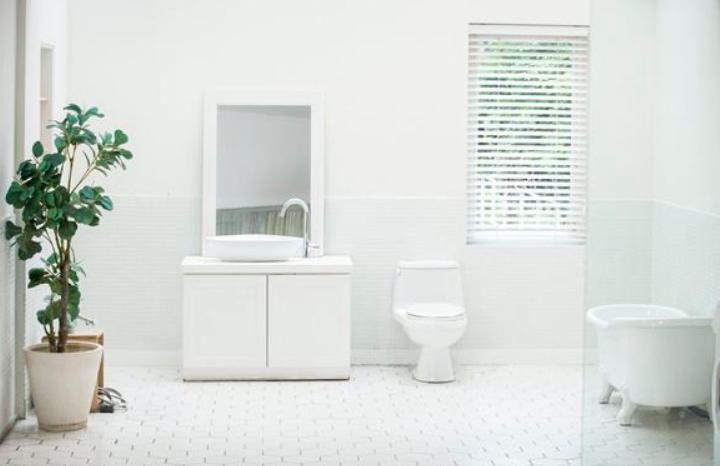Very often fans of succulent plants, having successfully mastered the care of simple and very common species, wish to have some rare plant. The kind of plant that fellow florists do not have. Rare succulents in regular flower stores can not find, you have to turn to online stores. This should not be frightened, succulents are well tolerated by the mail. It is better to buy plant seedlings than seeds. So it will be easier for you to make sure that they sent exactly what you wanted.
Echeveria, Echeveria ‘Topsy Turvy’

Echeveria, also Echeveria (lat. Echeveria) is a genus of succulent plants in the Tolstiaceae family. They are perennial herbaceous plants with succulent leaves forming a dense root rosette, or low succulent shrubs. There are about 170[2] species in the genus. Distributed mainly in Mexico, some species from Texas and California (USA) in the north to Peru in the south.
Popular names: “stone flower”, “stone rose”.
Adromischus cooperi, Stone flower, Stone rose
“poached-egg”

The Echeveria genus of succulents, also called Mexican chickens and chickens, includes hundreds of rosette-forming plants native to Mexico, Central America and South America. The square leaf tips of Echeveria ‘Topsy Turvy’ look like sea urchins and look great in group plantings or in combination with other succulents in a mounded garden. Plant ‘Topsy Turvy’ in a delightful pot with pale turquoise leaves.
Adromischus cooperi is a species of succulent plant in the family Crassulaceae. The generic name Adromischus comes from the ancient Greek adros (meaning “thick”) and mischos (meaning “stem”) The plant is endemic to the Eastern Cape of South Africa.
Adromischus cooperi purplish-gray mottled , sporting fluffy little leaves , sometimes called webbed corms . Plants are particularly sensitive to frost and should not be exposed to temperatures below 45° F. Spots on bright red orchids are more visible in bright sunlight. Plants propagate easily by leaves. Twist the leaves from the stems and add them to a moist cactus mixture. The roots will form in 4-6 weeks.
Adromischus cristatus, Wrinkled leafy plant

Adromyscus is a slow-growing succulent plant with a shortened stem and numerous fleshy leaves. The inflorescence is spike-like. The flowers are five petals fused into a tube.
A South African relative of kalanchoe, the wrinkled leaf plant ( Adromischus cristatus ) has triangular shaped leaves with slightly elongated tips. Pretty leafy plants grow best in cool, sunny locations with frosty but sparse watering. Red and white flowers appear between the two-inch leaves of the mature plant.
Faucaria tigrina, Tiger mouth

This is not a predator plant, but Faucaria tigrina of the Aizoaceae family. The genus name comes from the Latin “faux” – mouth, which is not surprising if you look at the two fused leaves with denticles. In fact, these denticles are soft.
The four key leaves are a kind of strange plant that attracts or rejects manjero bait with serrated leaves. In addition to the pebbly tiger jaw-like charming leaves, the plant is capable of producing golden yellow flowers that almost cover the plant in the fall and winter. Tiger jaw plants fill the niche of shade-tolerant succulents, but require more watering than most succulents. If the plant becomes too dry and the leaves separate from the stem, act quickly and you can grow a new plant.
Euphorbia obesa, Baseball ball

A small cactus-like succulent plant, almost spherical in shape, resembling a rock or green-brown soccer ball, without spikes or leaves, but sometimes forming “branches” or suckers in strange-looking sets of spheres. It can grow up to 20-30 cm in height and up to 9-10 cm in diameter.
Euphorbia obesa is a plump character that is well suited for use in enclosed container gardens. Its spherical shape gives weight and organizational attention to plantings, and it has none of the prickles expected of round succulents. Weekly watering will keep the warming plant happy and help it live a long life at home. Tiny flowers may appear on top of the ball, indicating that the plant is thriving.
Graptoveria ‘Topsy Debbi’, Graptoveria

The plant itself is a real delight, its beautiful spoon-shaped upright leaves combined with its lush lilac coloration are eye-catching, and these colors can be even more intense in the cooler winter months, giving this hybrid year-round interest.
Branched leaf rosettes, such as Graptopetalum ‘Topsy Debbie’, form new plants that are easy to propagate. Plants need sunlight to grow for health and vitality.
Aloe Vera and Turoid, Succulents

Succulents (Latin succulentus, “succulent”) are plants that have special tissues for storing water. They usually grow in places with arid climates.
The plants in the group united by the term “succulents” are not related to each other by a common origin, their similarity is due to similar habitat conditions. Succulents are even among such families as aroids (zamioculcas), bromeliads (dicia), and vinifera (cissus quadrangularis).
The classic aloe plant has received an upgrade: each leaf of the aloe ho and turoid has dozens of pinnate hairs, all of which have a sheath but do not bite. This tactile plant has moderate growth habits and can tolerate a variety of growing conditions as long as it remains in a place free of frost or water vapor.
Kalanchoe rhombopilosa, Kalanchoe

It somewhat resembles dwarf kalanchoe in description. Leaves with very short petioles, about 3 cm long and wide, with irregular denticles on top, silvery patches and brown-red spots. Flowers are yellow-green with red-purple spots along the edges.
Who can resist a plant called “pie in the sky”? This kalanchoe is one of many strange and beautiful creatures from Madagascar. The leaves are faded, gray with brown streaks. Small yellow flowers may appear on the stem in spring. Give your callancho an abundance of light for healthy plants.
Echeveria gibbiflora ‘Barbillion’, Echeveria gibbiflora

If you’ve ever seen the fleshy comb of a turkey or rooster, have you seen what these chickens have in common with Echeveria barbillon? It refers to knobby, fleshy growths. Is it beautiful or horrible? Give it lots of light and water and see if this succulent has unusual appeal.
The plant likes sunlight, so the pot is placed on any window of the apartment, except the northern one. In summer, echeveria is taken out into the open air (street, balcony), where it can be placed without shade. Under bright direct rays, the wax layer increases in thickness, due to which the flower acquires a bluish-gray color. If there is little light during the winter period, it is desirable to provide artificial lighting. After purchase or keeping in a shady place, echeveria under the direct rays gradually, to prevent sunburn.
Echeveria ‘Blue Curls’, Echeveria humpback hybrid

A specimen of echeveria, ‘Blue Curls’ looks exquisite in a terrarium with ruffled leaves, pink and aquapigments. To keep pests from disturbing the viability, do not allow water to accumulate on the rosette and remove dead leaves from the base of the plant.
A succulent with thin, curly leaves. Becoming more beautiful as it ages, this plant transitions through a palette of purple, silvery blue and green as the leaves mature. The new leaves in the center of the rosette appear pinkish-purple.
Aloinopsis Luckhoffii, Aloinopsis

Aloinopsis luckhoffii, es una especie de planta suculenta perteneciente a la familia de las aizoáceas. Es originaria de Sudáfrica.
Despite its small and mature 3-inch size, Aloinopsis luckhoffii abounds with fleshy leaves full of knobby white spots. This unusual shape, along with its shades of green, gray and brown, helps the plants harmonize with the rock, and it is a survival device that keeps them from eating. Please do not kill this plant. The best conditions are to mimic South Africa’s natural habitat: lots of sunlight (using light if necessary), surface runoff, and very poor irrigation. The plants are soft. If frosty, bring indoors.
Decorative possibilities of succulents are limitless, this is what contributes to the wide spread of modern trends in decorating exotic, previously unfamiliar plants.
Ease of care and unpretentiousness allow the novice gardener to experiment. After all, it’s never too late to start mastering the landscape art and features of indoor decoration, starting from scratch.






